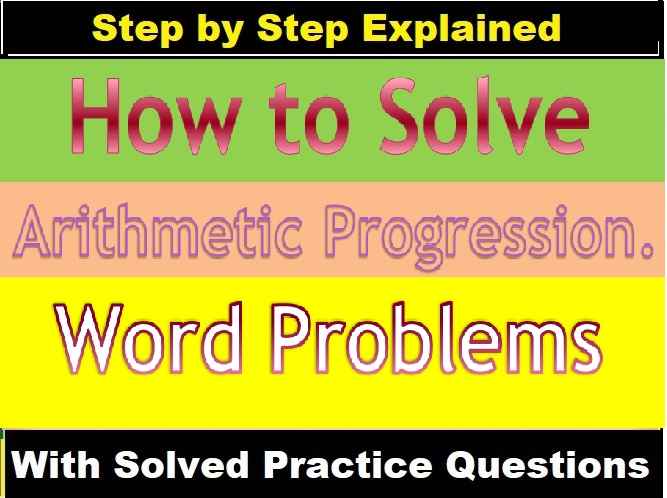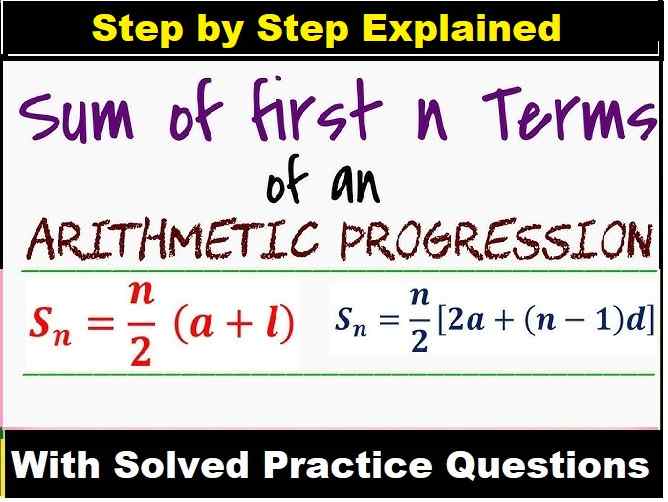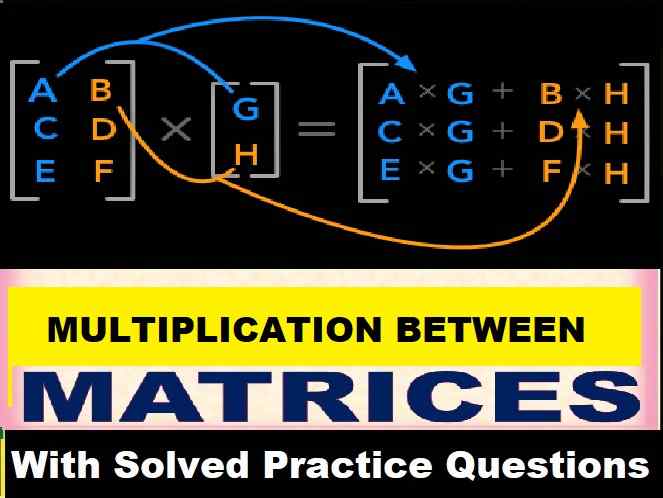Arithmetic Progression Exe-10D Concise Class-10 ICSE Maths Solution Ch-10. In this article you would learn solving problems on three or more Term of an AP. We Provide Step by Step Solutions / Answer of questions for Selina Concise Maths. Visit official Website CISCE for detail information about ICSE Board Class-10 Mathematics.

Arithmetic Progression Exe-10D Concise Class-10 ICSE Maths Solution Ch-10
| Board | ICSE |
| Publications | Selina |
| Subject | Maths |
| Class | 10th |
| Chapter-10 | Arithmetic Progression |
| Writer | R.K. Bansal |
| Exe-10D | Solving Problems on three or more Term of an AP |
| Edition | 2025-2026 |
Solving Problems on three or more Term of an AP
Arithmetic Progression Exe-10D Concise Class-10 ICSE Maths Solution Ch-10.
Que-1: Find three numbers in A.P. whose sum is 24 and whose product is 440.
Ans: Let three numbers be a – d, a, a + d
∴ (a – d) + a + (a + d) = 24
3a = 24
a = 8 …(1)
Also, (a – d) × a × (a + d) = 440
(a2 – d2) × a = 440
(82 – d2) × 8 = 440 …[From (1)]
64 – d2 = 55
d2 = 9
d = ±3
When a = 8 and d = 3
Required terms = a – d, a and a + d
= 8 – 3, 8, 8 + 3
= 5, 8, 11
When a = 8 and d = –3
Required term = a – d, a and a + d
= 8 – (–3), 8, 8 + (–3)
= 11, 8, 5
Que-2: The sum of three consecutive terms of an A.P. is 21 and the slim of their squares is 165. Find these terms.
Ans: Let three consecutive numbers in A.P. are a – d, a, a + d
∴ (a – d) + a + (a + d) = 21
a = 7 …(1)
Also, (a – d)2 + a2 + (a + d)2 = 165
a2 + d2 – 2ad + a2 + a2 + d2 + 2ad = 165
3a2 + 2d2 = 165
3 × (7)2 + 2d2 = 165 …[From (1)]
3 × 49 + 2d2 = 165
147 + 2d2 = 165
2d2 = 18
d2 = 9
d = ±3
When a = 7 and d = 3
Required terms = a – d, a and a + d
= 7 – 3, 7, 7 + 3
= 4, 7, 10
When a = 7 and d = –3
Required terms = a – d, a and a + d
= 7 – (–3), 7, 7 + (–3)
= 10, 7, 4
Que-3: The angles of a quadrilateral are in A.P. with common difference 20°. Find its angles.
Ans: Let the four angle of a quadrilateral in A.P. be a, a + 20°, a + 40° and a + 60°
∴ a + (a + 20°) + (a + 40°) + (a + 60°) = 360° …[Angle sum property]
4a + 120° = 360°
4a = 240°
a = 60° …(1)
Thus, angles of a quadrilateral are = a, a + 20°, a + 40° and 60°
= 60°, 80°, 100° and 120°
Que-4: Divide 96 into four parts which are in A.P. and the ratio between product of their means to product of their extremes is 15 : 7.
Ans: Let the four parts be (a – 3d), (a – d), (a + d) and (a + 3d)
Then, (a – 3d) + (a – d) + (a + d) + (a + 3d) = 96
4a = 96
a = 24
It is given that
(a-d)(a+d)(a-3d)(a+3d)=157
a2-d2a2-9d2=157
576-d2576-9d2=157
4032 – 7d2 = 8640 – 135d2
128d2 = 4608
d2 = 36
d = ±6
When a = 24, d = 6
a – 3d = 24 – 3(6) = 6
a – d = 24 – 6 = 18
a + d = 24 + 6 = 30
a + 3d = 24 + 3(6) = 42
When a = 24, d = –6
a – 3d = 24 – 3(–6) = 42
a – d = 24 – (–6) = 30
a + d = 24 + (–6) = 18
a + 3d = 24 + 3(–6) = 6
Thus, the four parts are (6, 18, 30, 42) or (42, 30, 18, 6).
Que-5: Find five numbers in A.P. whose sum is 12(1/2) and the ratio of the first to the last terms is 2 : 3.
Ans: Let 5 numbers in A.P. be (a – 2d), (a – d), a, (a + d) and (a + 2d).
Then, (a-2d)+(a-d)+a+(a+d)+(a+2d)=12(1/2)
5a=25/2
a=5/2
It is given that
a-2d/a+2d=2/3
3a – 6d = 2a + 4d
a = 10d
5/2=10d
d=1/4
a=5/2 and d=1/4
Thus, we have
a-2d=5/2-2×1/4
= 5/2-1/2
= 4/2 = 2
a-d=5/2-1/4
= 10-1/4 = 9/4
a=5/2
a+d=5/2+1/4
= 10+1/4
= 11/4
a+2d=5/2+2×1/4
= 5/2+1/2
= 6/2 = 3
Thus, the five numbers in A.P. = 2,9/4,5/2,11/4 and 3
= 2, 2.25, 2.5, 2.75 and 3
Que-6: Split 207 into three parts such that these parts are in A.P. and the product of the two smaller parts is 4623.
Ans: Let the three parts in A.P. be (a – d), a and (a + d)
Then, (a – d) + a + (a + d) = 207
3a = 207
a = 207/3 = 69
It is given that
(a – d) × a = 4623
(69 – d) × 69 = 4623
69 – d = 4623/69 = 67
d = 69 – 67 = 2
a = 69 and d = 2
Thus, we have
a – d = 69 – 2 = 67
a = 69
a + d = 69 + 2 = 71
Thus, the three parts in A.P. are 67, 69 and 71
Que-7: The sum of three numbers in A.P. is 15 the sum of the squares of the extreme is 58. Find the numbers
Ans: Let three numbers in A.P. be a – d, a, a + d
a – d + a + a + d = 15
3a = 15
a = 5
It is given that
(a – d)2 + (a + d)2 = 58
a2 + d2 – 2ad + a2 + d2 + 2ad = 58
2a2 + 2d2 = 58
2(a2 + d2) = 58
a2 + d2 = 29
52 + d2 = 29
25 + d2 = 29
d2 = 4
d = ±2
When a = 5 and d = 2
a – d = 5 – 2 = 3
a = 5
a + d = 5 + 2 = 7
When a = 5 and d = –2
a – d = 5 – (–2) = 7
a = 5
a + d = 5 + (–2) = 3
Thus, the three numbers in A.P. are (3, 5, 7) or (7, 5, 3)
Que-8: Find four numbers in A.P. whose sum is 20 and the sum of whose squares is 120.
Ans: Let four numbers in A.P. be a – 3d, a – d, a + d, a + 3d
a – 3d + a – d + a + d + a + 3d = 20
4a = 20
a = 5
It is given that
(a – 3d)2 + (a – d)2 + (a + d)2 + (a + 3d)2 = 120
a2 + 9d2 – 6ad + a2 + d2 – 2ad + a2 + d2 + 2ad + a2 + 9d2 + 6ad = 120
4a2 + 20d2 = 120
a2 + 5d2 = 30
52 + 5d2 = 30
25 + 5d2 = 30
5d2 = 5
d2 = 1
d = ±1
When a = 5, d = 1
a – 3d = 5 – 3(1) = 2
a – d = 5 – 1 = 4
a + d = 5 + 1 = 6
a + 3d = 5 + 3(1) = 8
When a = 5, d = –1
a – 3d = 5 – 3(–1) = 8
a – d = 5 – (–1) = 6
a + d = 5 + (–1) = 4
a + 3d = 5 + 3(–1) = 2
Thus, the four parts are (2, 4, 6, 8) or (8, 6, 4, 2).
Que-9: Insert one arithmetic mean between 3 and 13.
Ans: Arithmetic mean between 3 and 13
=> 3+13/2
=> 16/2
=> 8
Que-10: The angles of a polygon are in A.P. with common difference 5°. If the smallest angle is 120°, find the number of sides of the polygon.
Ans: Angles of a polygon are in A.P.
and common difference (d) = 5°
Smallest angle (a) = 120°
Now, in a polygon of n sides, the sum of interior angles = (2n – 4) × 90°
n/2[2×120∘+(n-1)×5∘]=(2n-4)×90∘
n/2[240∘+5n-5∘]=180n-360∘
n[235° + 5n] = 360n – 720°
5n2 – 125n + 720 = 0
n2 – 25n + 144 = 0
n2 – 16n – 9n + 144 = 0
n(n – 16) – 9(n – 16) = 0
(n – 16)(n – 9) = 0
n = 16 or n = 9.
Que-11: 1/a , 1/b and 1/c are in A.P. Show that : bc , ac and ab are also in A.P.
Ans: Since, 1/a,1/b and 1/c are in A.P.
We have to show that
bc, ca and ab are also in A.P.
∵ 1/a,1/b and 1/c are in A.P.
∴ 2/b=1/a+1/c
2/b=c+a/ac
2ac = bc + ab or ab + bc
∴ ab, ac and bc are in A.P.
–: Arithmetic Progression Exe-10D Concise Class-10 ICSE Maths Ch-10 solving problems :–
Return to :- Selina Concise Solutions for ICSE Class-10 Maths
Thanks
Please Share with Your Friends


